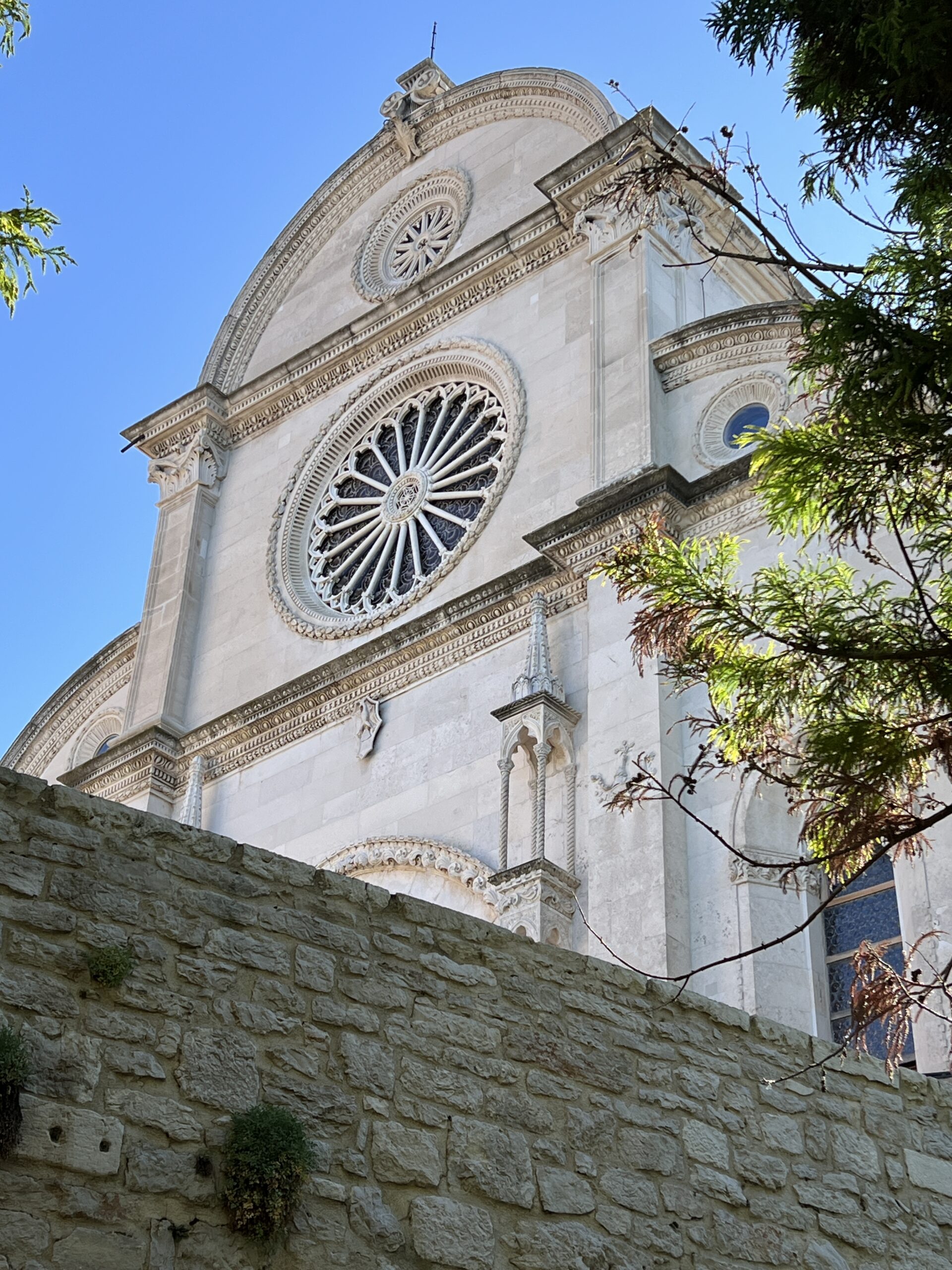Our ship’s next stop was Zadar, Croatia. Our excursion took us to several stops in Dalmatia, including the lovely city of Šibenik, where you Game of Thrones fans might recognize some of the cathedrals. The crown jewel is St. James, built in Lego style using stone with holes and pegs and no mortar, is a UNESCO World Heritage Site. The day we visited was St. Michaels’s Day, the celebration of the Patron Saint of Šibenik, and our tour took us through the church procession where I think every parish in a 10 mile radius participated. St. Michael is the patron saint of firemen and policemen, and they participated in the procession as well. And the cathedral has really good speakers all through the city, so everyone can hear the service and the amazing choir.
Any artifact or ruin unearthed in Croatia must be left intact, and therefor becomes part of the architecture. The Šibenik library is mostly glass, with the exception of one wall of stone with a relief and statue. We saw many random walls with obvious relics unearthed and preserved.
Šibenik hosts a two-week-long, International Children’s Festival, every summer offering family and young people-orientated entertainment in the form of cinema, theatre and street performances, art workshops and many other creative activities. The boy with the umbrella statue pays tribute to this festival.
Our next stop on our way back to Zadar was a canyon-spanning bridge over the Krka River, which empties into the Adriatic. The views of the river were beautiful, and the marina boasts having hosted Bill Gates’ yacht annually. I can see the appeal. We were also able to experience a natural phenomenon here, the bura winds, which blow from the north over the Velebit mountain range. The strong winds close highways; the wind speeds have been clocked as high as 70 mph. We certainly felt them, and the bus had one of the luggage hatches forced open by them.
Our very knowledgeable guide then returned us to Zadar, where we walked through the oldest part of town. Roman, Byzantine, Venetian, Austrian, Napoleonic, Yugoslavian, and finally Croatian, Zadar has many remaining influences from all of the above. The history here is mind boggling. Roman remains can be seen everywhere. There is the Byzantine church and the Venetian lions, and stone walls used by the Venetians to keep out the Turks. The Cathedral of Anastasia is the largest church in all of Dalmatia (the coastal region of Croatia). Its origins date back to a Christian Basilica built in the 4th and 5th centuries. Zadar had clean drinking water in the 1st century from pipes built by the Romans, and during the Serbian – Croatian war was cut off from Croatia and deprived of that drinking water.
We then visited two devices made by the architect Nikola Bašić as part of a project to redesign the new city coast. The Sea Organ is an architectural sound art object located in Zadar which plays music by way of sea waves and tubes located underneath a set of large marble steps. Holes on the steps transmit the sound. The waves interact with the organ and create somewhat random harmonic sounds. It’s both beautiful and soothing and attracts tourists and locals alike. You can see the crowd gathered on a beautiful Sunday afternoon.
Bašić also designed the nearby Monument to the Sun. It consists of a 22-meter diameter circle representing the Sun, with three hundred, multi-layered glass plates placed on the same level as the stone-paved waterfront, with photovoltaic solar modules underneath. Lighting elements installed in the circle turn on at night and produce a light show. Smaller circles represent the planets. The monument symbolizes communication with nature. Unfortunately, we left the port in daylight and didn’t get to see the lights. Maybe next time…



Leave A Comment